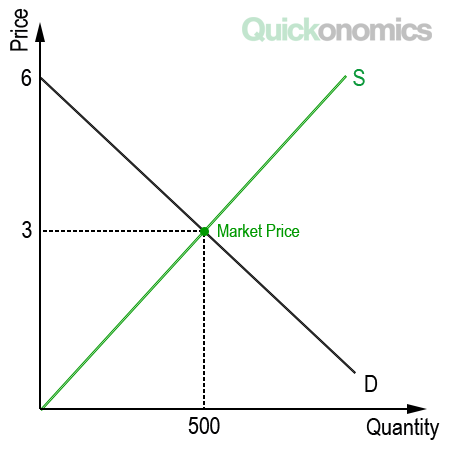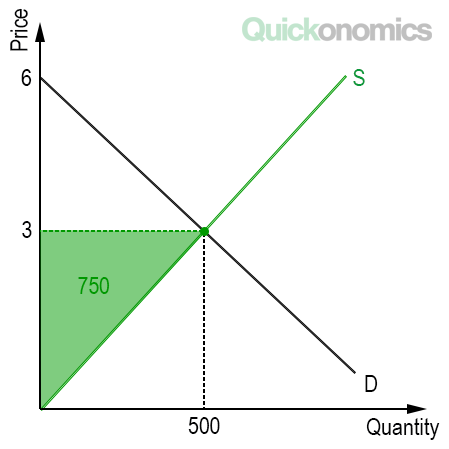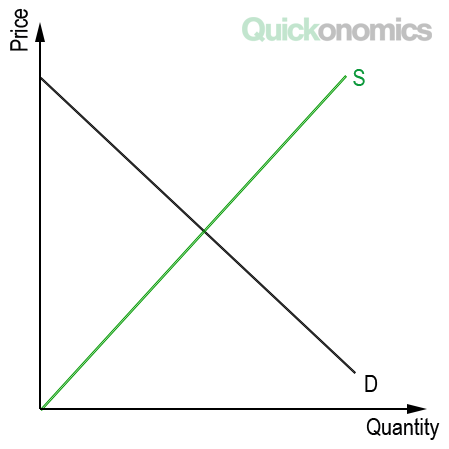2) Find the Market Equilibrium

Once we have our supply and demand diagram, we can find the market equilibrium. It is located at the intersection of the supply and the demand curve. That means, to calculate it we have to first set the demand function equal to the supply function and solve for x. This gives us the equilibrium price. Then we can plug this number back into the demand function and solve for Q to get the equilibrium quantity.
Using our example, the equilibrium condition can be calculated as -166.7x + 1000 = 166.7x. In this equation, x equals 3. That means when the price is USD 3.00, the market is in equilibrium. Now, if we plug this number back into the supply function (QS = 166.7*3), we find that the equilibrium quantity is 500 burgers. In other words, when the market is in equilibrium, 500 burgers can be sold at a price of USD 3.00 each.
3) Connect the Price Axis and the Market Price

Once we have calculated the market price and quantity, we can add these numbers to the supply and demand diagram. As you can see, the market price is generally not the lowest possible price at which the good or service could be sold. This means, there are at least some sellers who would have been willing to sell the product at a lower price than the actual market price. These sellers can now earn a producer surplus, equal to the market price minus their individual willingness to sell. We can illustrate this by drawing a horizontal line between the y-axis and the market equilibrium (i.e. the intersection of S and D).
If we draw this horizontal line for our example, we see that it intersects the y-axis at a price of USD 3.00. As you can see in the illustration above, the line divides the area between the supply and the demand curve into two triangles. One triangle above the USD 3.00 line and another one below. The area of the lower triangle represents the sum of all individual producer surpluses, which equals total producer surplus.
4) Calculate the Area of the Lower Triangle

To calculate the area of the lower triangle, we need to multiply its base with the height and divide the result by two (a = [b*h]/2). Please note that this formula only works with linear supply curves. Other types of supply curves require a more complex formula to calculate the area between two curves (see Wolfram|Alpha for more information).
If we apply this to our example, we can easily calculate the area of the lower triangle. We know that the base of the triangle is 500 and its height is 3.00. Thus, we can use the following equation: (500*3)/2 = 750.00. Thus, the total producer surplus in our burger market is equal to USD 750.00.
Summary
Producer Surplus describes the difference between the amount of money at which sellers are willing and able to sell a good or service (i.e. willingness to sell) and the amount they actually end up receiving (i.e. the market price). Calculating producer surplus follows a 4-step process: (1) draw the supply and demand curves, (2) find the market equilibrium, (3) connect the price axis and the market price, and (4) calculate the area of the lower triangle.
